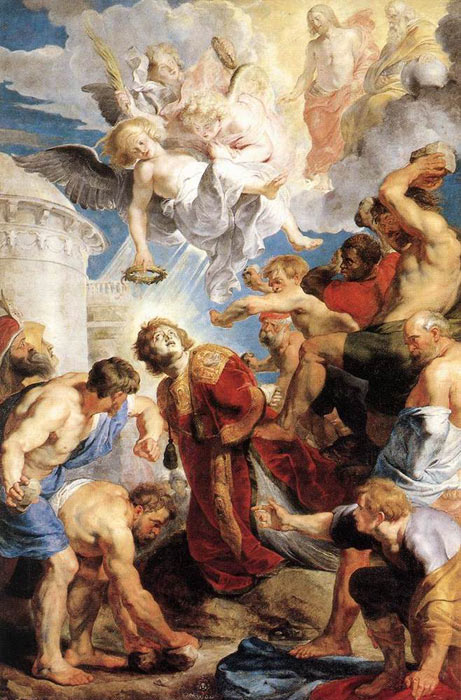Flavius Josephus, who understood the priesthood of this time very well, made it clear that at the time the Romans attacked the Temple the Jews called upon the fear-inspiring name of God (The Jewish War V:438). He wrote he had no right to reveal this name to his reader (Jewish Antiquities II:275), however he did give information of primary importance on the very pronunciation he wanted to conceal. However, in his work The Jewish War V:235 he stated: "The high priest had his head dressed with a tiara of fine linen embroidered with a purple border, and surrounded by another crown in gold which had in relief the sacred letters; these ones are four vowels" This description is excellent; moreover, it completes the one found in Exodus 28:36-39.
However, as we know, there are no vowels in Hebrew but only consonants. Regrettably, instead of explaining this apparent abnormality, certain commentators (influenced by the form Yahweh) mislead the readers of Josephus by indicating in a note that this reading was IAUE. Now, it is obvious that the 'sacred letters' indicated the Tetragram written in paleo-Hebrew, not Greek. Furthermore, in Hebrew these consonants Y, W, H, do serve as vowels; they are in fact called 'mothers of reading' (matres lectionis). The writings of Qumrân show that in the first century Y used as vowel served only to indicate the sounds I and É, W served only for the sounds Ô and U, and a final H served for the sound A. These equivalences may be verified in thousands of words. Additionally, the H was used as a vowel only at the end of words, never within them. So, to read the name YHWH as four vowels would be IHUA that is IEUA, because between two vowels the H is heard as a slight E. Eusebius quoted a writer of great antiquity (before 1200 BCE?) called Sanchuniathon who spoke about the Jews in chapter four of his work entitled Phoenician History. Philo of Byblos translated
this work into Greek, at the beginning of our era, and Porphyry was familiar with it. Sanchuniathon maintained that he got his information from Ieroubal the priest of IÉÜÔ, that is Jerubbaal found in Judges 7:1. According to Judges 7:1, Jerubbaal was the name of Judge Gideon who was a priest of Jehovah (Jg 6:26; 8:27), probably written IÉÜÔA in Greek.Irenaeus of Lyons believed that the word IAÔ in Greek, [Iah] in Latin) meant 'Lord' in primitive Hebrew (Against Heresies II:24:2) and he esteemed that the use of this Hebrew word IAÔ to denote the Name of the unknown Father, was intended to impress gullible minds in worship of mysteries (Against Heresies I:21:3). Furthermore, the Greek concept of an anonymous god, mainly supported by Plato, being mixed in with the Hebrew concept of the God with a personal name engendered absolutely contradictory assertions.
So, Clement of Alexandria wrote in his book (Stromateon V:34:5) that the Tetragram was pronounced Iaoue while writing, and then later, that God was without form and nameless (StromateonV:81:6). In the same way, Philo a Jewish philosopher of the first century had good biblical knowledge and knew that the Tetragram was the divine name pronounced inside the temple, since he related: "there was a gold plaque shaped in a ring and bearing four engraved characters of a name which had the right to hear and to pronounce in the holy place those ones whose ears and tongue have been purified by wisdom, and nobody else and absolutely nowhere else" (De Vita Mosis II:114-132). However in the same work, paradoxically, he explains, commenting on Exodus 3:14 from the LXX translation that God has no name of his own! (De Vita Mosis I:75).
The Christian translators (of heathen origin) not understanding Hebrew exchanged the Tetragram with Lord; Marcion in 140 C.E. even modified the expression "Let your Name be sanctified" into "Let your spirit be sanctified". On the other hand, some Christians (of Jewish origin) such as Symmachus kept the Tetragram
written in Hebrew inside the Greek text (in 165). Eusebius clarified that Symmachus was an Ebionite, that is a Judeo-Christian, and that he had drafted a comment on Matthew's book (Ecclesiastical History VI:17). However, the Judeo-Christians were completely rejected after 135 of our era by the "Christians" as Jewish heretics. The whole of translations being made according to the Septuagint, many readers ignored the problem of the vocalization of the Name. However Jerome, who realized the first Latin translation directly from the Hebrew text, noted in his commentary on Psalm 8:2: "The name of the Lord in Hebrew has four letters, Yod He Waw He, which is the proper name of God which some people through ignorance, write (instead of h w h y) in Greek and which can be pronounced Yaho". Augustine of Hippo wrote around 400 that "Varro was rightly writing that the Jews worship the god Jupiter"! (De consensu evangelistarum I:22), his remark proves that he probably confused the name of Jupiter (Ioue) with the Hebrew name of God Iaô, or perhaps Ioua
Erudition at its best!







